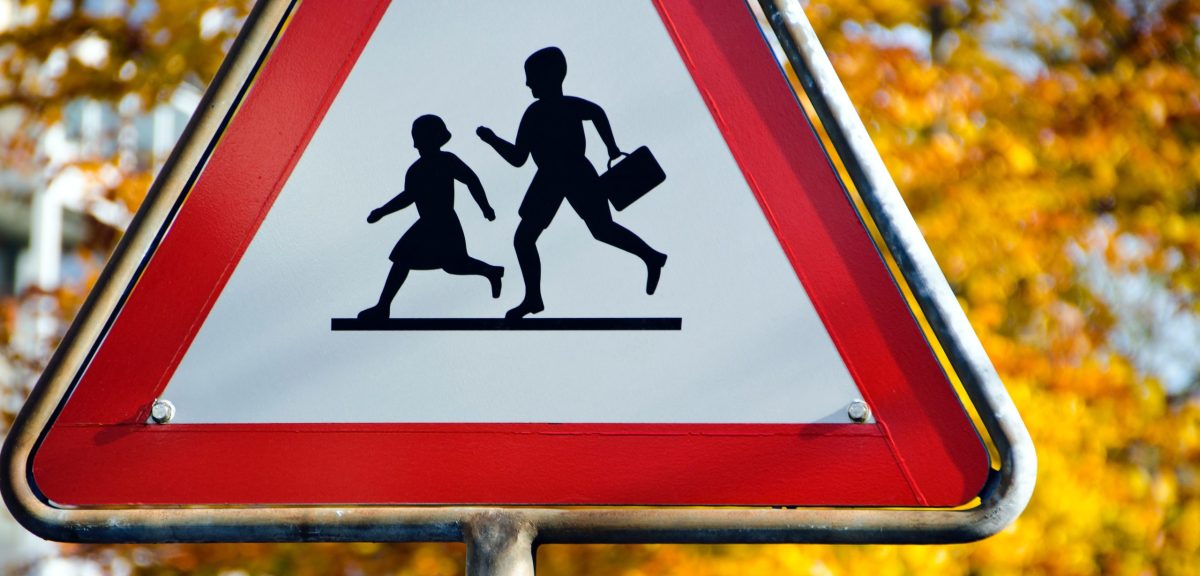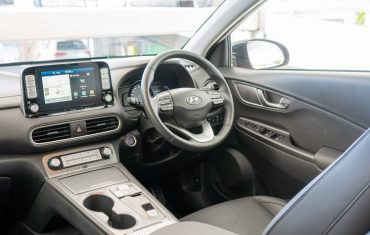
Road safety takes a detour from defensive driving
For your fleetAs a fleet or HR manager, you’re always working hard to ensure the right driving processes and resources are in place for a safe working environment. Craig Cockerton, Chief Operating Officer of Fleetcoach – a corporate driver safety training program and SG Fleet partner – believes it’s time to challenge ourselves on how we approach safety on the road.
If we’re serious about improving the safety of all road users, not just the people whose salaries we pay, there are some new considerations we need to bear in mind as people who drive for work.
Let’s get to know Fleetcoach
Fleetcoach is an award-winning online driver training provider and fleet safety solution founded in Aotearoa New Zealand. In Craig’s own words, “Essentially, we’re out here helping solve the problem of keeping people safe on the road.”
The company emerged from over 30 years’ research and evidence-based findings in the field of road safety by Dr Robert B. Isler at Waikato University; specifically, eDrive, an online program for learner drivers developed in collaboration with the New Zealand Transport Agency and the country’s Accident Compensation Corporation in 2010.
A driver simulation program, eDrive was so successful that Isler and his team adapted the program to meet the needs of another group of at-risk drivers: people who drive for work. Fleetcoach was built on the proven principles of eDrive, primarily addressing the crucial higher-level skills of visual search, hazard perception and risk management to deliver fewer road deaths, fewer injuries and vehicle collisions.
“All of the research tells us that the number one indicator of crash risk is hazard perception,” explains Craig. “And the key thing about hazard perception is there are so many things that can impact your ability to perceive hazards. So, that’s our core: building up strong hazard perception.”
To help drivers better deal with hazard perception, the Fleetcoach team takes a bold move away from defensive driving philosophy that has underpinned driver training in Aotearoa New Zealand and Australia for generations. Instead, the program favours a more proactive assessment of potential problems on the road.
“One of the things that the program does is teach drivers how to move their eyes, so they actually see what’s going on around them,” explains Craig. “They’re able to identify what’s a hazard, identify risks and know what to do about them, and then adjust their driving before it becomes an issue, rather than the old defensive driving style, which is: how do I get out of this dangerous situation when I’m in it? We give you the skills to stay out of those dangerous situations to begin with.”

Culture is everything
Craig Cockerton argues, for all the findings that research has uncovered, having the right culture within your organisation is essential for ensuring safe driving practices are (a) taken on board (b) implemented by your people when behind the wheel.
“You’ve got to build a culture of safe driving,” he says. “You can’t just go, okay, telematics tells us we’ve got a bad driver, so we’re going to put them in training. If you really want to make a difference, you’ve got to start building a culture of safe driving in your business, even down to things like considering the words you are using when talking about this stuff.”
“For instance,” he continues, “we don’t use the word ‘accident’. Accidents give the impression it couldn’t be avoided, but the reality is that 95 percent or more of incidents that happen out on the road are the result of driver choice. By making sure we’re talking about this stuff in the right way, we’re setting the right expectations about the outcomes we’re looking for.”
One thing Craig often sees is organisations believing they’re managing risk adequately by addressing the bottom percentile of their drivers.
“Usually, they’ll have telematics in place and they’re measuring things like acceleration, speed, the g-force events. They’ll look at things and think that the bottom 10 percent of drivers are the ones to train because they’re the bad drivers. But what they’re basically saying is there’s an acceptable level of bad driving behaviour, and we’re only going to deal with it if it goes below that. Culturally, this sends a message that poor driving behaviour is okay, and that it’s just not okay after the level that we’ve set.”
“Secondly,” he goes on, “you’re saying that we’re only going to help people stay safe after we’ve already identified they’ve got problems. So, something has to have happened before they get training. You’re essentially saying you’re going to wait for something to happen, and you’re only going to deal with it afterwards.”
Another example Craig cites in organisations is a speeding tolerance in their telematics.
“The organisation is effectively saying it’s okay to speed five to 10 km/h over the speed limit. It’s illegal, right, but the business is saying it’s okay. When you think about it, if you’re travelling at 60 km/h and then you increase your speed to 65, you’ve just doubled your crash risk. Is the business saying that’s okay? It doesn’t build a strong safety culture.”
The people at Fleetcoach have found that focusing on drivers in the lower ranges of performance creates problems in terms of people’s ability to take on information: “You’re effectively taking a punitive approach and people are closed off to training when they’re being punished.”
“If we came and told you, ‘Hey, you have to do this training now because you’ve had three speeding events and you can’t drive again until you’ve done it’, then you’re not going to be in a very good frame of mind,” Craig details. “You’re going to be pretty angry, actually. You’re likely to be closed off to training – you’re defensive – which means you’re just going to work through the training, and you’re not going to learn anything.”
“The whole punitive approach is basically just the business ticking a box. They are saying ‘Yep, we’ve done something to train them after their problem’. And then we just assume things are going to get better, but the reality is, and history shows, that people don’t get better as a result of that approach.”

The link between wellbeing and safe driving
It’s a word that we’re seeing used increasingly in everyday life, and fleet safety isn’t immune. Craig explains how research demonstrates that driver training needs to be more individualised, which includes taking into account the wellbeing of that individual.
“There’s a strong connection between a driver’s wellbeing and their incidents,” he says. “When we look at driver training, historically, the companies have typically just looked at, say, a speed issue, and then focused on speed. But when you start taking a wellbeing approach to this, you look at the wider picture, and you start to understand a little bit more about how to really make a positive change.”
Craig believes that focusing on what your organisation can do to help make drivers better has important benefits.
“The Fleetcoach program features mindfulness techniques, which allow us to focus on things that help people get back in the mindset of driving. How do I bring my anxiety levels down and focus on driving, for example? Mindfulness is a great technique for that. We get people to self-reflect and understand what it is they’re going through at the time, so they can make better decisions.”
Learning from Fleetcoach
Craig argues that the learner should always be in control of their learning. Why? Because evidence confirms adults learn best when they’re ‘in the driver’s seat’ (pardon the pun). Furthermore, behavioural change is a powerful element in training that can’t be underplayed.
“There’s too much in the driver training space that gets you to watch this video, read this piece of text, answer these questions, and move on. You know that top-down instructional style? Basically, what happens then is people pass a test, and then, two days later, they’ve forgotten everything they just did,” Craig observes.
“The coaching approach we take – the types of skills we’re training and how we train – actually gives people real behavioural change,” he continues, “because they are practising real skills that they can then translate onto the road straight away; it’s not just a piece of knowledge to remember. It is very much a skill that stays with you.”
“Once they’ve done our training, they’ve learnt to actually pay attention to what’s going on around them – and to not just look but actually take in what they’re seeing. This means they’re seeing a lot more, they’re able to make better decisions now, and they feel better about their driving.”
In conclusion
It’s clear from Fleetcoach’s advice that making a cultural change at an organisational level could be the tactic we need to bring down our road tolls. This involves thinking proactively– rather than defensively, as we’ve previously been taught – and removing the punitive aspect from any fleet driving training we may introduce. It also means thinking about the decisions an individual driver will make at any point, depending on their state of mind.
An organisation’s operational and HR leaders are in a prime position to drive this change and teach their people to protect themselves from danger before they’re in it. Because ‘accidents’ don’t just happen.
Start a conversation with SG Fleet about improving your workplace road safety culture today.
 Driving Insights
Driving Insights




